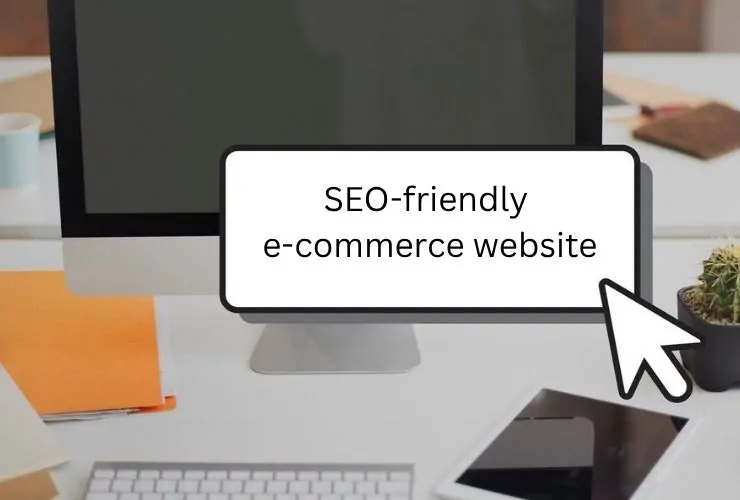Standing out in today’s fast-growing online shopping industry is important. Although launching an e-commerce website may feel like the first major task in a long list, it is merely that; the first task, and without visibility in the search engine results, even your beautifully designed stores may struggle to get visitors.
SEO is used to elevate your store in the search results in Google, so customers can find your products with ease. In this guide we will review various SEO techniques which can transform your e-commerce website into a vehicle for traffic and sales.
1. Select an E-commerce Platform with great SEO Features
Your journey within SEO will depend heavily on the basis of where your site is built. When you’re in the infancy stage, or if you are scaling a large enterprise, finding an SEO-friendly e-commerce platform is vital. These platforms should be equipped with essential components, such as:
- Customizable URLs and meta tags
- Structured, indexable HTML
- XML sitemaps
- Ability to integrate SEO plugins and tools
Recommended Platforms:
- Shopify: Simple to navigate, Speed (Google ads quick set up), SEO apps functionality
- WooCommerce with WordPress: Highly customizable, wealth of SEO Plugins i.e. Yoast
- Magento (Adobe Commerce): Good for medium to large stores with developed specifications
Be certain that the platform you select is able to provide
2. Optimize Your Website Structure for SEO and User Experience
Good site structure will not only improve navigation for users, but helps search engines crawl your website faster.
Best Practices for SEO-Friendly Structure:
- Shallow hierarchy: Users (and search engines) should be able to get to any product within 3 clicks.
- Organized categories: Products should be organized into clear categories and subcategories.
- Use friendly URLs: Use a clear descriptive URL (like /electronics/laptops/dell-inspiron) rather than a query string (/products?pid=123) as your URL.
- Consider including breadcrumb navigation too which helps users remember where they are, and creates better internal linking for SEO purposes.
3. Optimize Every Product Page as a Standalone Page for SEO
Each product page is a landing page that can potentially rank on Google and you do not want to waste that opportunity.
Notes for Product Page SEO Include:
- Have unique title tags and meta descriptions for each product.
- In-depth product descriptions that use keywords naturally.
- Use alt text for images so a search engine can index them.
- Earn user-generated content, like reviews and Q&A, to provide more freshness to the page.
Don’t copy descriptions from manufacturer descriptions – original content will earn more SEO points.
4. Optimize Your Page Speed and Performance
A slow-loading e-commerce website can adversely affect user retention and hurt your SEO. Google uses site speed as a ranking factor, and users expect all pages to load in 3 seconds or less.
- Choose good hosting and implement a consistent CDN.
- Compress and lazy-load images.
- Minify CSS, JavaScript, and HTML.
- Enable browser caching and get GZIP compression.
- Use digital tools like Google PageSpeed Insights, GTmetrix, or Lighthouse to diagnose and repair performance issues.
5. Make Sure Your Site is Mobile Optimized
With over 60% of online shopping being done on mobile devices, it is critical to have a mobile-first approach.
Recommendations:
- Use responsive design to adjust your site to any screen size.
- Make your navigation and buttons touch-friendly.
- Simplify your checkout to reduce drop-offs.
- Never use intrusive pop-ups since they hinder mobile usability.
- Google uses mobile-first indexing, and your mobile site performance is in the rankings.
6. Build Strong Technical SEO Foundations
Technical SEO makes sure your site can be crawled, indexed, and displayed to proper sites and users in the way you intend.
SEO Practices:
- Submit your XML sitemaps to Google Search Console.
- Competently use robots.txt to limit crawler access to specific areas.
- Implement canonical tags to resolve duplicate content issues.
- Utilize structured data (Schema.org) for rich snippets on product pages.
- Review crawl errors, and repair broken links.
7. Produce Quality Content and Include Keywords
Content is more than just product descriptions. It’s a chance to rank for additional keywords and educate or motivate shoppers.
Benefits of Good Content for E-commerce SEO:
- Create a blog to help promote product guides, buy tips or how-tos
- Write FAQ sections around typical search intent queries
- Use internal links for blog content and products
8. Build Quality Backlinks for Authority
Backlinks are still one of the strongest ranking signals in SEO. They tell search engines that people find your site trustworthy and authoritative.
Ways to Get Backlinks:
- Use influencers or bloggers for product review
- Submit your store to industry directory or listing
- Create linkable content, like infographics, buying guides, or trend reports
- Guest post on other reputable blogs in your niche
- Always avoid spammy links or paid schemes. Remember, quality over quantity.
Conclusion: SEO is a Long-Term Growth Strategy
Building an SEO-friendly e-commerce website isn’t a one-time task—it’s an ongoing process that requires technical expertise, strategic content, and continuous optimization. By choosing the right platform, improving site structure and performance, and consistently producing valuable content, you’ll not only climb the search engine rankings but also provide a better experience for your customers.
Remember: Every click you earn organically is one you didn’t have to pay for. Invest in SEO today for sustainable growth tomorrow.














